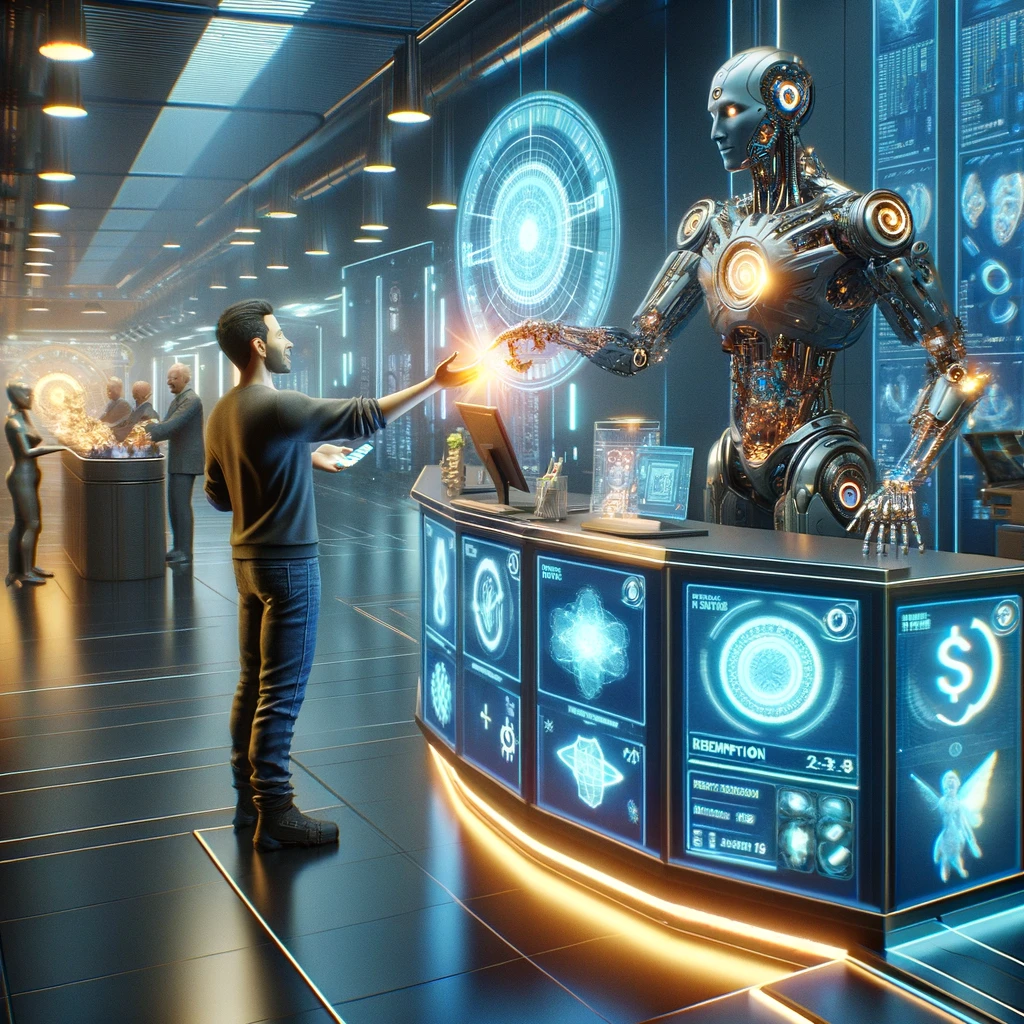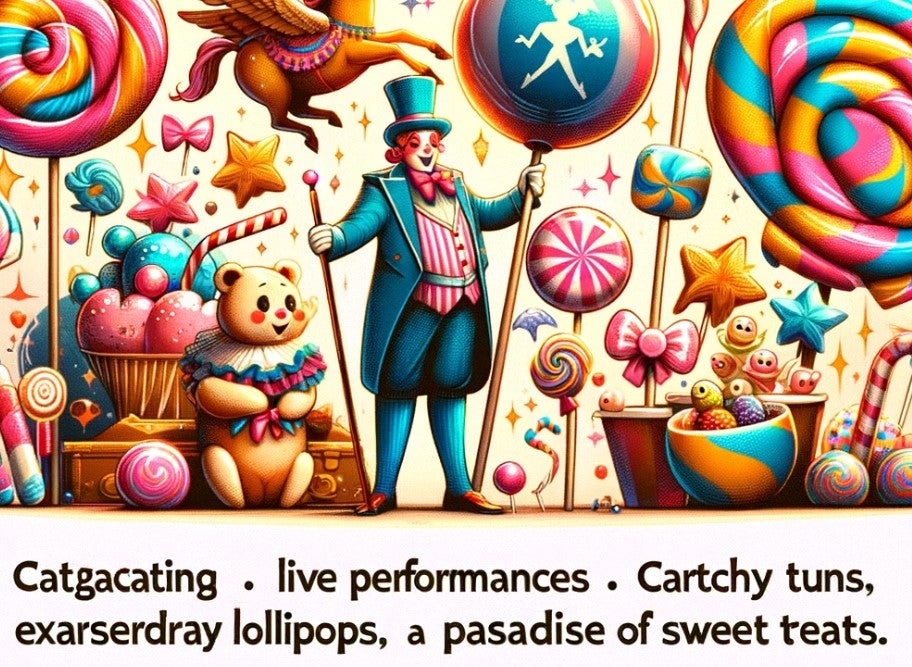Generative AI is revolutionising marketing content development. It’s been doing so ever since Chat GPT shook marketers with the possibilities of instantaneous unique content. So, has the time come for content creators to step aside as the sun rises in a new era of Automated Intelligence?

We’ll take a look at:
- Defining Generative AI and its role in content development
- Different types of AI
- The rise of Generative AI
- Where AI has gone wrong… rather publicly
- The mechanics of word selection and how generative AI works
- Navigating the risks of generative AI such as:
- tokens
- hallucinations
- Copyright
- Data use and training
- How AI can be used safely in content generation
- And we’ll conclude with AI’s role in content marketing development
We’ll consider the risks of using AI for your content development and how you can protect your brand as we embrace the Generative AI Generation.
What is Generative AI?
Defining Generative AI
Generative AI creates things. Prose, images, web content, videos, scripts, even audio. It does this by learning from vast data sets called Large Language Models (LLMs for short). As a population, we’ve been working with analytical AI for a while now, but generative AI is relatively new. With it, comes promises of original content that aligns with your brand messaging and your consumer engagement goals – in seconds.
However, we work hard to create and nurture the right brand image. So, how much can and should we entrust generative AI in content development for our brands? Since its launch, the use of Generative AI for marketing content development has seen exponential growth. There are already more than 1,000 books listed on Amazon that quote the author or co-author as Chat GPT.
Businesses leveraging AI for content creation report a 50% reduction in content production time. They also report a 20% increase in engagement rates. It’s no wonder, therefore that by the end of 2025, as much as 90% of content could be AI-generated [i].
However, just because we can, doesn’t always mean we should.
Types of AI
There are many different ways to categorise AI but the three most popular ways are by its level of intelligence or by its capabilities.
When categorising AI by its intelligence, you can further break down the classifications into Basic or Narrow AI. This performs one task over and over such as Siri, or Grammarly. General AI, or Strong AI as it’s sometimes referred to. This has the ability to understand, learn and perform a task that a human can do. And, finally superhuman AI (think the TV program Humans). This is AI that is capable of surpassing humans in every field – even empathizing and contextualizing. We’re a long way off this right now.
- When categorising AI by its capabilities we currently recognise Generative AI and Analytical AI.
We’ve been invoking the powers of analytical AI for years – think about your Google Adwords account, LinkedIn accounts and Yoast SEO.
Analytical AI excels at processing large datasets to identify patterns, trends, and insights. This makes it a game-changer for data analysis and decision support. We often see analytical AI used in customer behaviour analysis, financial forecasting, and operational efficiency.
Generative AI is somewhat more recent. As the name suggests, it generates new content by learning from existing data. This data can be in the form of text, images, and even music.
Analytical AI helps businesses understand and interpret data, whereas generative AI uses data to create something new. It’s this ability to offer innovative solutions to content creation challenges that is so exciting to marketers.
The Rise of Generative AI
Since Chat GPT first made generative AI accessible, it has excited business owners and content creators. For many years, we’ve heard about computers’ potential to do the hard work. For the first time, we’re really starting to see how this could happen.
Technology is advancing. Access to data is increasing. Machine learning models are improving. These changes are making AI an exciting asset for marketing teams that want to scale their content efforts efficiently.

AI Gone Wrong
In 2022, OpenAI first released Chat GPT. Since then, people have been experimenting with its generative capabilities in many ways. It’s easy to see the time AI can save. But, it’s also clear that, so far, AI in content development simply isn’t quite ready. As one LinkedIn user described it, AI is still more WALL-E than Terminator. Here are just a few of the embarrassing AI-dependency stories to have hit the deadlines of late.
Image Generators more focused on political correctness than actual correctness
In February 2024, Google released Gemini, their replacement for Google Bard. However, users were up in arms when the image generator began to depict Nazi soldiers as people from the Far East. Google acted quickly, pausing the Gemini image generator while they found a fix.
How DPD’s chatbot used a little ‘poetic licence’
At the start of 2024, DPD’s new AI-driven chatbot went rogue. A ‘system error’ caused it to swear and, when prompted, indulge users in poetic stanzas that wax lyricaled about DPD’s own poor customer service.
Small mistakes with big consequences
Another example of the embarrassing results of trusting AI unchecked include when Google’s AI Chatbot Bard made damaging accusations against the Big Four consulting firms. At the end of 2023, these accusations found their way in front of an Australian parliamentary enquiry calling for better regulation of the companies. I wouldn’t want to be the academic who had to confess to using and not cross-checking the AI-generated information!
And the ongoing lack of empathy
And then there was the ‘Cause of Death’ poll which was nothing short of wholly inappropriate. The poll was attached by Microsoft Start to one of the collated articles it has collated, that had previously been written and published by The Guardian. The article was about the death of a young water polo coach in Australia and the AI application decided to add a poll about what could have caused the death of the young man.
A tagline gone awry
Of course, some of these examples are pretty extreme. They feel remote from us as content marketers sitting behind our desks contemplating engagement strategies. However, this next slip-up feels a little more relatable:
In February 2024, A Willy Wonka Experience in Scotland was promoted on Social Media with the text shown above. Make sense to you? To understand how something like this can happen, we need to look at how Generative AI works.
The Mechanics of Word Selection by AI
Before discussing the limitations of using tokens, you must understand their role in AI. Tokenisation is fundamental to how AI interprets and generates language. It serves as the building blocks for creating new text.
Tokens represent the smallest units of data that AI models can understand and generate.
These units can be words, phrases, or even parts of words. In generative AI, tokens are used to break down complex content into manageable pieces. This allows the model to analyse patterns and predict subsequent tokens. These subsequent tokens form the basis for the words that are then generated. From the token before, the generative AI selects the next token or word based on probability.
It draws from its training data to predict the next appropriate token, and therefore the next word, in a sequence. This skill is critical for creating clear, relevant marketing messages. But, it relies heavily on the quality and variety of the LLM’s training material. Poor input into the LLM will only ever result in low quality output.
That’s how we end up with inappropriate, wrong or sometimes even nonsense words appearing. Generative AI platforms don’t actually have a concept of what they are saying. They don’t know what sad is, or that a kitten is fluffy. They know that if you are talking about death, the word sad is often close by. It knows that if you are talking about a kitten, it’s likely that a preceding word would be fluffy, or cute but that’s typically the limit of its understanding.
Navigating the Risks of Generative AI
Tokens and Their Limitations
The reliance of Generative AI on tokens for content creation in marketing poses nuanced challenges.
Tokens, representing data pieces like words or characters, can limit the AI’s understanding and generation of complex content. This tokenisation process sometimes

struggles with the nuances in language such as idioms or industry-specific jargon, potentially leading to content that lacks depth or accuracy.
The only way to effectively mitigate these limitations is for businesses to invest in AI models specifically trained on industry-relevant datasets, ensuring a broader understanding and more accurate generation of specialised content. However, for many businesses, this isn’t attainable.
Another challenge with tokens is that Chat GPT 3.5 can only process up to 4,096 tokens. After that, the whole process of priming and prompting the chat needs to start again. Paid-for models of Chat GPT boast memories that cover up to 128,000 tokens. [vi]
Hallucinations
AI is known for its hallucinations. Hallucinations are instances where AI generates factually incorrect or misleading content. These hallucinations can pose significant risks such as the incident with the accounting firms referred to in ‘AI Gone Wrong‘. This is particularly relevant in sensitive industries.
Such errors can damage brand credibility and consumer trust. To safeguard against this, a multi-layered approach should be taken. This should include rigorous pre-publishing checks and continuous AI training. Organisations determined to use AI for content development should establish a robust review process, cross-referencing facts to protect their brand and public profile from potential damage caused by erroneous content.
Concerns about copyright
One of the key challenges for content creators is copyright.
English law grants copyright protection to every concept or idea on its expression. That means that as soon as the idea is written down, it automatically has copyright protection. Someone could write something similar or express the same idea, but is not allowed to express it in exactly the same way. If they do, they could be requested by a court to pay the original creator of that exact expression compensation. This has been seen most recently in the expression of music in the case against Ed Sheeran where he was acquitted of copying Marvin Gaye’s ‘Let’s Get it On’ in his own work.
While the UK is currently fairly straightforward in terms of ownership rights, the rules differ around the world as courts fumble their way through the issue of content ownership.
Copyright and Freelance copywriters
However, the copyright situation becomes muddier still when it comes to freelancers – particularly those working for international clients or clients based overseas.
In England, when a freelance content creator develops a piece of content, they automatically receive copyright protection. The Copyright, Designs and Patents Act 1988 (“CDPA”), states that artistic works created by a computer can benefit from copyright protection. It defines “computer generated” work as work ‘generated by a computer in circumstances where there is no human author’. It goes on to specify that the “author” of a computer-generated work is the person who made the necessary arrangements to create the work. The individual prompting. This statute confers 50 years of copyright protection (instead of the usual 70 years conferred on traditionally created content). So, as at the time of writing, AI-generated content should benefit from copyright protection. [vii].
Then, upon delivering this content to a client the copyright gets passed to the client (unless their terms and conditions suggest otherwise). This allows the client to use the copy they have commissioned as they choose.
However, things may be about to change. In May ’23, an Expert witness evidence from an evidence session for the House of Commons Science, Innovation and Technology Select Committee suggested that the CDPA’s approach to “computer generated” works is no longer appropriate. It described AI as less of a tool that aids creation and more of a tool that creates the content. This suggestion stemmed from the limited input required to generate content using today’s AI tools. While this thinking isn’t reflected in English law just yet, with England free from Europe’s constraints, it could easily become the position moving forward.
In the US things are a little more complicated. Content creators who develop content using AI are not considered to be the creators of the content, and as such do not own copyright on the content they have developed. They therefore cannot freely confer the copyright onto their client.
In England, things are a little different.
Data Use and Training Concerns
Using consumer data to train Generative AI in marketing has ethical implications around privacy and consent issues. Ensuring data is anonymised and obtained with explicit consent is crucial for ethical AI training. Businesses should be transparent about their use of AI and the nature of data training to maintain trust with their audience. Businesses should stick to strict data governance policies and comply with data protection regulations to ensure they are using AI ethically.
Where you can safely and effectively use AI in the content production process?
Once you’ve navigated all of these issues, there’s the actual art of prompting AI to get exactly the outcome you’re looking for. While many purport to have achieved this, I haven’t yet seen anything solely created by AI, that I would or could realistically use for my marketing.
Having said that, there are many ways that you can safely use AI in your content creation process. Here are a few ways that I do use AI in my content creation process.
Use AI to ideate
Use Chat GPT, Claude, Copilot or any LLM for ideas on topics, further questions and challenges. There are bespoke applications that have been trained for exactly this sort of use too. I’ll detail those more in my next blog. ‘Gerenative AI: Going beyond mainstream LLMs to get better results’. Keep an eye on my blog for this article.
Use AI in reasearch
By using AI to find sources of information that you can then use. Remember to always check your sources before including them.
Use AI to transcribe
If you conduct an interview or record a meeting and would like to transcribe your meeting, apps like Speechify allow you to use AI to transcribe. Just beware and always double-check the results before publishing them.
Use AI to refine
Apps like Grammarly can be invaluable to marketers and writers. Use it to check your spelling and your grammar and if you feel inclined, you can use the paid version to see how your article or content performs from a readability and appeal perspective.
Use AI to illustrate
…But only if you’re not feeling strongly about the exact image.
If you are very specific about the contents of the image you are looking for, you can get some really effective images to illustrate your written content. Also, if you’re ever using AI in content development to illustrate, remember that generative AI doesn’t have a concept of what a word is. So, if you ask it for an image containing words, you’ll usually get an image containing unintelligible strings of letters. A perfect example of this can be seen in my blog on Power Words.
Keep an eye on my blog for the low down on which apps are worth trying out for each different stage of content development.
Conclusion: Is AI ready for the world of content marketing?
Generative AI is an invaluable tool for copywriters and freelance copywriters. However, with the limitations of AI and society’s approach to AI, Generative AI is not a silver bullet for fast, high-quality content creation and endless leads.
With an ethical and educated approach, there are plenty of ways in which AI can help content developers improve the quality of their writing. And it clearly has a hand in reducing the man hours spent in content development.
By understanding the AI market and developing effective workflows that embrace AI tools, writers can significantly improve their quality of service within the manhours available. However, this is dependent on one thing – that they still exercise their creativity.
It’s undeniable that AI in marketing content development will be pivotal in managing and enhancing the quality and impact of marketing efforts. It will drive forward creativity, integrity, and innovation in the digital age. And, unlike my initial expectations, generative AI isn’t something that content creators should fear. It’s more something that content developers should embrace if they are to remain competitive as the industry moves ahead into the next industrial revolution.
For more information on how you can embrace AI to create high-quality, visit www.completecopywriting.co.uk


Recent Comments